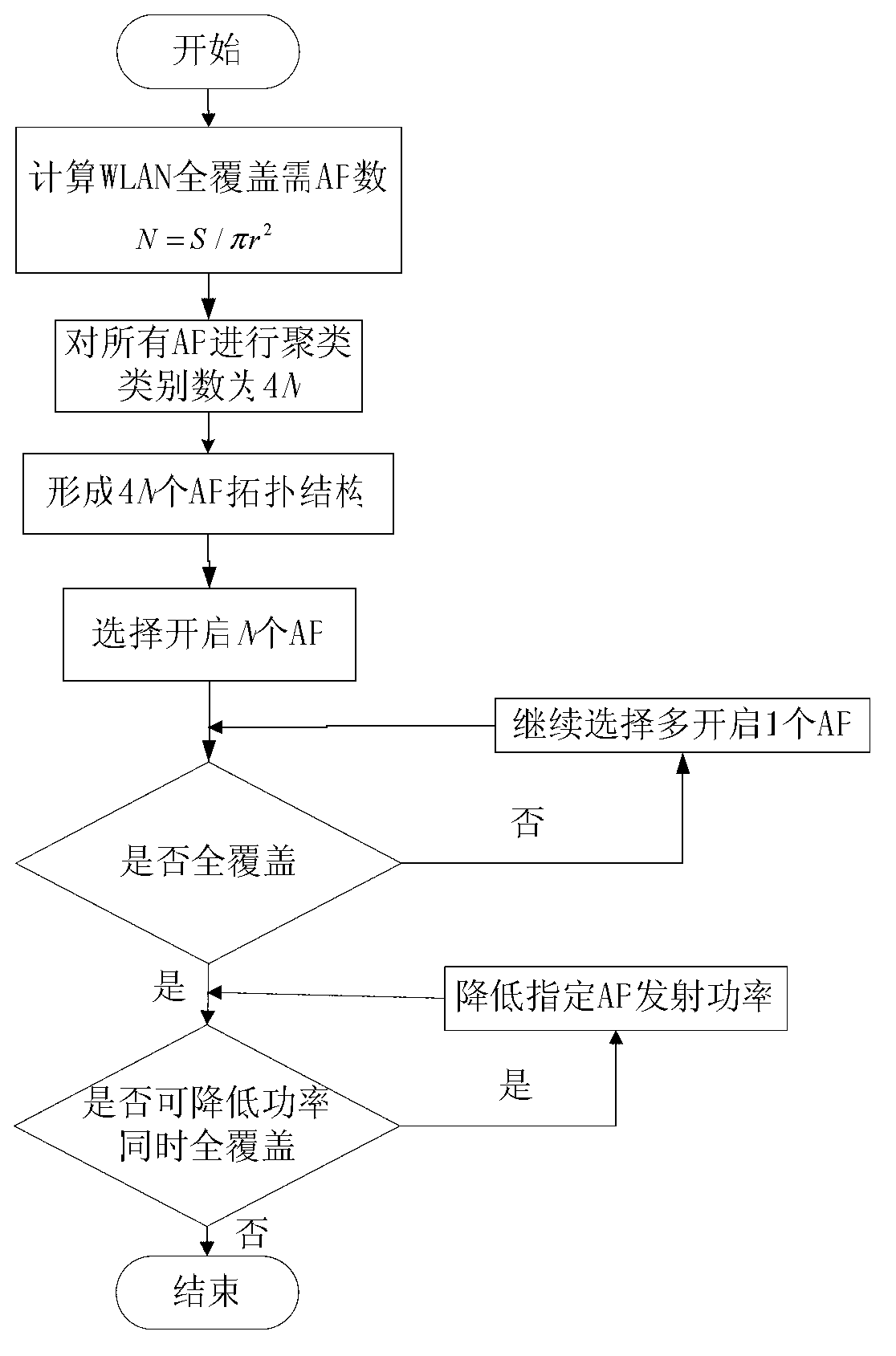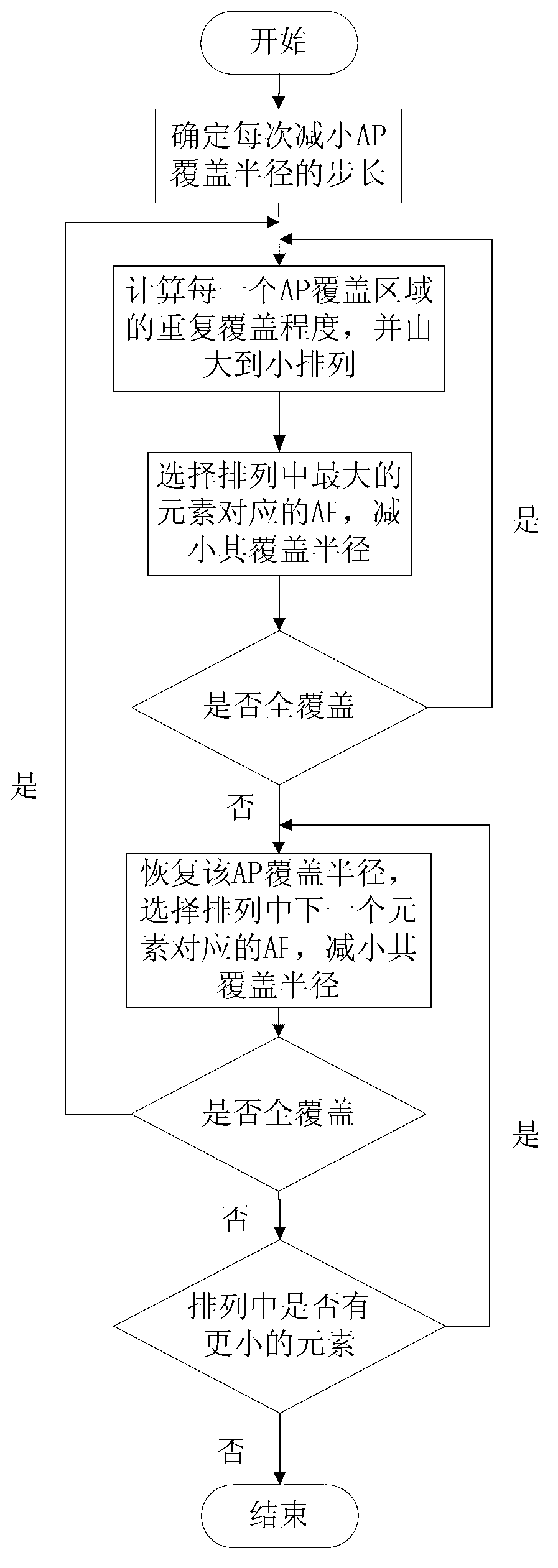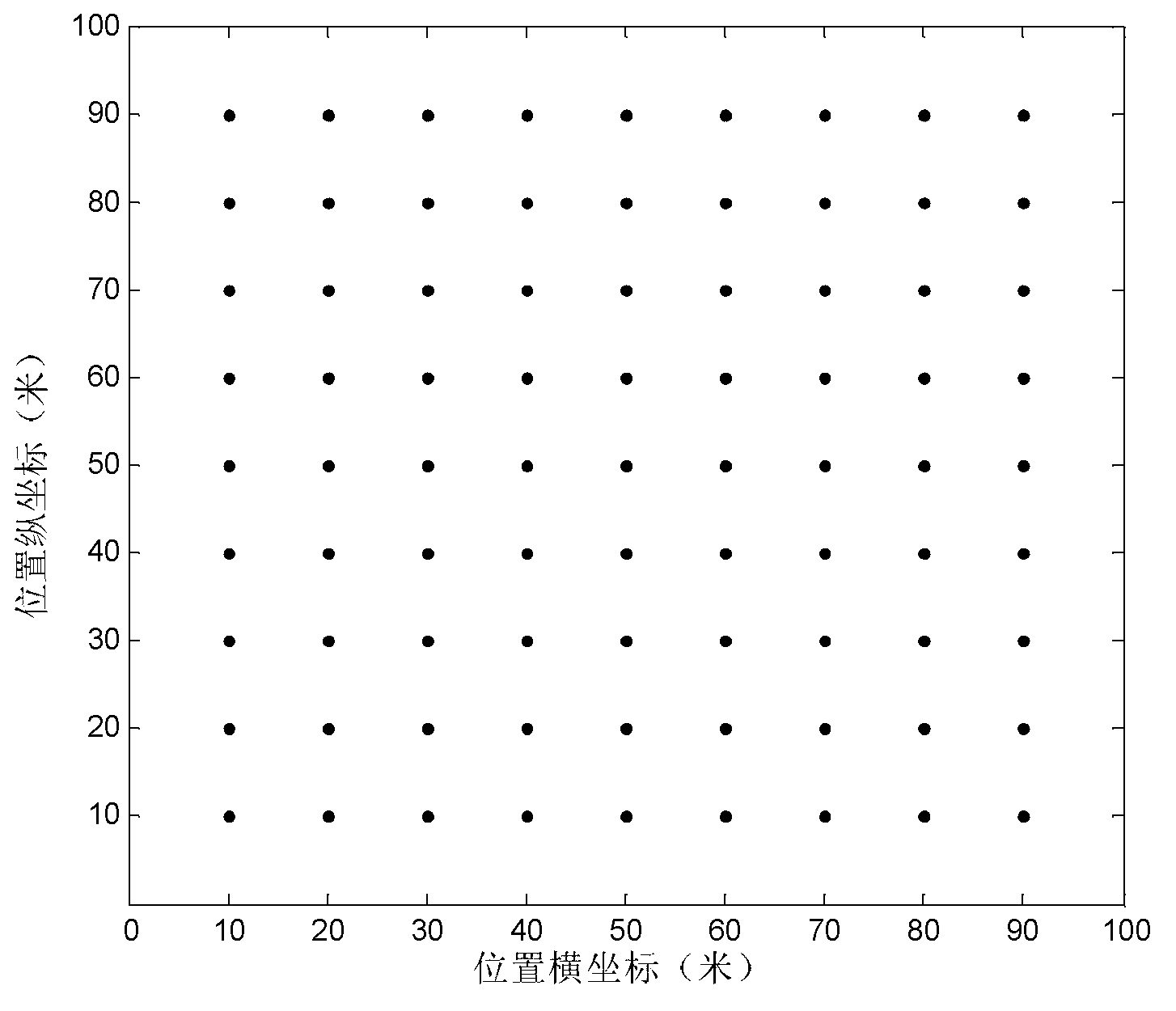AP (access point) transmitting power optimization method based on energy conservation and interference avoidance in green WLAN (wireless local area network)
A transmission power and optimization method technology, applied in power management, energy-saving ICT, energy consumption reduction, etc., can solve problems such as mutual interference of AP co-frequency components, energy waste, affecting communication quality, etc., to reduce and co-frequency interference, reduce The effect of energy expenditure
- Summary
- Abstract
- Description
- Claims
- Application Information
AI Technical Summary
Problems solved by technology
Method used
Image
Examples
specific Embodiment approach 1
[0038] Specific implementation mode one: as figure 1 As shown, the AP transmission power optimization method based on energy saving and interference avoidance in the green WLAN described in this embodiment is carried out for APs that have been densely deployed in the WLAN, and it includes the following steps:
[0039]1. Determine the number of APs N required for full coverage of the WLAN, that is, divide the total area of the WLAN area by the individual coverage area of each AP, and round up to get an integer N; this is an ideal value. In fact, there will be many overlapping coverages between APs. In the area, in order to ensure full coverage, set the required number of APs to 4N, and then consider appropriately reducing the number of enabled APs;
[0040] 2. Establish a two-dimensional Cartesian coordinate system, and use a clustering algorithm to cluster the densely deployed APs in the WLAN according to their geographical locations. The target is 4N categories; then, in ...
specific Embodiment approach 2
[0044] Specific implementation mode two: as figure 2 As shown, this implementation mode is a further limitation to the specific implementation mode 1:
[0045] AP transmit power optimization method implementation process: This process performs transmit power optimization control based on energy saving and interference avoidance for APs whose positions and numbers have been fixed in the WLAN. Relationship to coverage radius:
[0046] Channel transmission loss satisfies formula (1):
[0047] L(d)=|d| -n S(d)R(d)(1)
[0048] In formula (1), d is the transmission distance, |d| -n is the path loss, n is a constant between 3 and 6, S(d) represents shadow fading, and R(d) represents multipath fading. It can be seen that the farther the transmission distance is, the greater the fading is;
[0049] The received power satisfies formula (2):
[0050] P r (dBm) = P t (dBm)+G t (dB)+G r (dB)+L(dB)(2)
[0051] In formula (2), P r Indicates the received power, P t Indicates th...
specific Embodiment approach 3
[0073] Here is an example for analysis:
[0074] The schematic diagram of the WLAN environment is as follows: image 3 As shown, the wireless coverage area is 100m×100m, and 81 APs are evenly distributed inside. Take the initial AP coverage radius as: r=30m.
[0075] When each AP is turned on individually, the coverage area is: S cover = πr 2
[0076] Total coverage area of WLAN experimental scenarios: S total =100×100=10000m 2
[0077] Theoretically, the number of APs required to complete full coverage is:
[0078] In order to ensure full coverage, the number of initially selected cluster center APs is: 4N=16.
[0079] According to the geographic location, 81 APs are clustered by the fuzzy K-means clustering algorithm, and 4N results and corresponding central node AP coordinates are obtained. According to the "minimum-maximum principle", when the number of enabled APs is 9, full coverage is satisfied, and the following is obtained: Figure 4 The schematic diagra...
PUM
 Login to View More
Login to View More Abstract
Description
Claims
Application Information
 Login to View More
Login to View More - R&D
- Intellectual Property
- Life Sciences
- Materials
- Tech Scout
- Unparalleled Data Quality
- Higher Quality Content
- 60% Fewer Hallucinations
Browse by: Latest US Patents, China's latest patents, Technical Efficacy Thesaurus, Application Domain, Technology Topic, Popular Technical Reports.
© 2025 PatSnap. All rights reserved.Legal|Privacy policy|Modern Slavery Act Transparency Statement|Sitemap|About US| Contact US: help@patsnap.com



